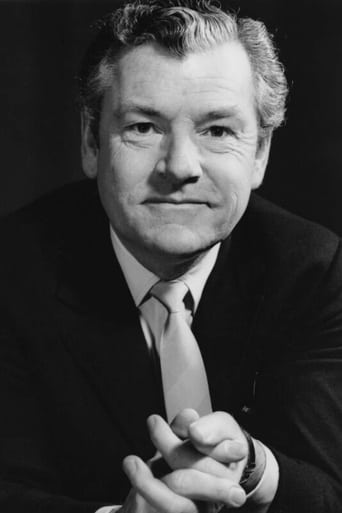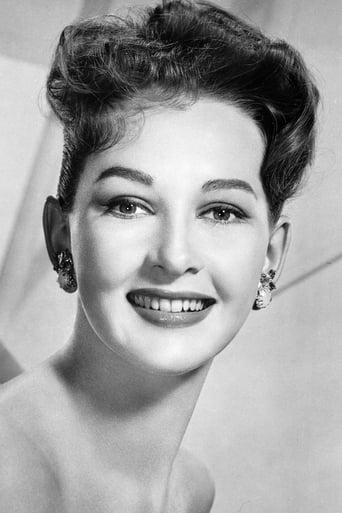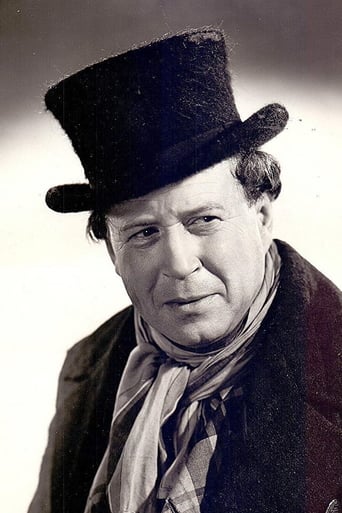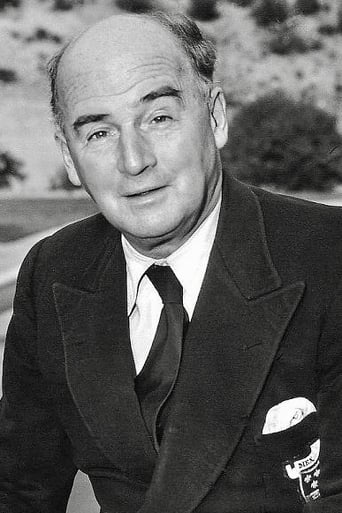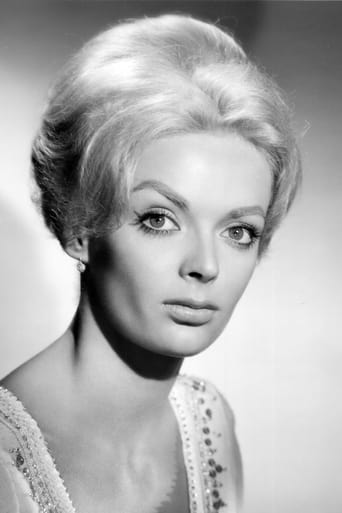Plantiana
Yawn. Poorly Filmed Snooze Fest.
Greenes
Please don't spend money on this.
Exoticalot
People are voting emotionally.
Geraldine
The story, direction, characters, and writing/dialogue is akin to taking a tranquilizer shot to the neck, but everything else was so well done.
Spikeopath
The 39 Steps is directed by Ralph Thomas and adapted to screenplay by Frank Harvey from the novel of the same name written by John Buchan. It stars Kenneth More, Taina Elg, Brenda De Banzie, Barry Jones, Reginald Beckwith and Faith Brook. Music is by Clifton Parker and cinematography by Ernest Steward.Some found it hard to differentiate this interpretation of the classic novel from the superb Alfred Hitchcock version made in 1935. Which is a shame because on its own terms this is a fun packed mystery boosted by More's effervescent charm.Story is a cracker, Richard Hannay (More) finds himself up to his neck in espionage after a mysterious lady is stabbed to death in is flat. Trying to get to the bottom of the mystery puts him in grave danger and takes him North to Scotland, where he hopes he can clear himself of the suspected murderer rap - and unravel the words he heard - The 39 Steps.No! It isn't as good as Hitch's film, choosing to replace out and out suspense with a more humoristic approach, but the chase yarn aspects are briskly directed by Thomas, and the Scottish locations provided a wonderful backdrop to the fun drama. This same year Hammer Films put a different spin on The Hound of the Baskervilles, with fine results. So it be with the Rank Organisation and this take on the Buchan story. Good fun and well worth a look if you haven't seen it before. 7/10
Paul Andrews
The 39 Steps starts in Regent's Park in London where Richard Hannay (Kenneth More) witnesses a woman (Faith Brooke) with a pram knocked own by a speeding car, he rushes to the aid of the baby in the pram but only finds a gun inside which he keeps. Later that afternoon Hannay manages to meet up with the mysterious woman at a performance of Mr. Memory (James Hayter) at the Palace theatre, they start talking & the woman says she is a secret agent trying to stop the leaking of top secret Government information. Back at Hanny's flat the woman is murdered & Hannay know's the police will suspect him so he takes the gun & the few pieces of information that he managed to learn from the woman & head towards Scotland where she was due to meet her contact & expose the head of the enemy organisation who want to smuggle top secret plans for the 'Boomerang' defense system out of the country. Wanted for murder Hannay finds himself caught up in a plot that could threaten Britain & those who live there...This British production was directed by Ralph Thomas was a remake of Alfred Hitchcock's earlier The 39 Steps (1935) which itself was based on the novel of the same name by John Buchan while yet another big screen version was made as The Thirty Nine Steps (1978) a couple of decades after this, while I liked The 39 Steps for most of it's duration as a fairly gentle & light hearted action adventure I simply didn't understand the end. Now I don't know if I missed something but I couldn't make sense of anything, what the bad guy's plans actually were or how it was all supposed to work. How did Mr. Memory get all the codes & formula's? Was he in on it? How was the guy with a finger missing going to extract the information he needed? Why not just kidnap Mr. Memory & get the information he wanted sooner? How did Hannay know what to ask Mr. Memory at the end? Was Mr. Memory in on it? If he was why didn't he just tell the guy the secret codes? If he wasn't how did Mr. Memory know those top secret things? It all seemed rather random & rushed, the ending should have been explained better & I am sorry if it's just me being stupid (it wouldn't be the first time) but I honestly didn't understand what was meant to be going on, what the bad guy's plan was & how it was all meant to pan out. If the bad guy's had planted the information in Mr. Memories head then why not just photograph it? Why not say it out loud & record it to tape? Why such a complicated & frankly silly plot? Until the last bewildering five minutes or so The 39 Steps had a been a perfectly likable adventure film that moved along at a decent pace, had a few amusing situations as Hannay met an odd assortment of people on his travels & even had some decent action too but that baffling ending ruined it all for me. Again, if it's just me being thick then I apologise but can someone explain what the bad guy's plan was meant to be? If it had worked properly how was it all meant to go down?The 39 Steps looks nice enough, the colourful London & Scottish locations add to the film although maybe the special effects aren't the best, the shot of Hannay hanging on to the side of a speeding looks poor. Director Thomas keeps things moving at a good pace, there are some workmanlike scenes like the part when Fisher overhears the two spies expose their whole plan over a public telephone. Despite the title we never actually see the 39 steps that it refers to apart from when the opening credits play over a still of them. I have never seen Hitchcock's original or read the novel so I cannot compare how this stands up to them.Filmed on location in Scotland & in the studio back in London, this is well made for the time although obviously it does look a bit dated today. It's interesting to see the leading man here, or the hero if you like as a middle aged rather ordinary looking man rather than a super fit, toned muscle bound twenty something that typifies the average action hero today. Legendary comedy actor Sid James has a great little cameo as a truck driver.The 39 Steps is a perfectly good adventure mystery film until the end where it all falls apart, none of it made any sort of sense to me. Maybe I am just being stupid but I couldn't work any reasonable explanation out. I remember really liking the 1978 version with Robert Powell but haven't seen it since the 90's so I think I will watch that again soon.
ianlouisiana
"The 39 steps" is quite an enjoyable Kenneth More movie.Like a good boy scout Mr More is unflappable,resourceful,straightforward,clean in word and deed and whistles cheerfully under all difficulties.He carries a comb with him and manages to look manly wearing pale - blue shorts.He is a nice middle - class 1950s English hero,soon to be drowned under an ocean of vicious foul - mouthed murderous thugs who will beat the film audiences into submission to such an extent that well - spoken chaps with service flats in town and spare time on their hands to save the old country from Johnny Foreigner will shortly disappear from our screens for ever - or at least until Don Sharp's brilliant 1970's remake. There is very little actually "wrong" with this movie.It's main weakness is Miss Tania Elg who has no obvious reason for being in the picture.She can't act,she can't react and she can't even wear her clothes convincingly.It seems to me that doing the movie was a chore she just had to get done before she was allowed to go out to play. She seems an irrelevance to Mr More too,which is unfortunate as she was presumably meant to provide the love interest.Miss Brenda de Banzie proves far more interesting in that department. Mr Duncan Lamont and Mr Michael Goodliffe are good as the villains,the chillingly named Kennedy and Brown,possibly coincidentally the names of the murderers of PC Gutteridge in 1928 in Essex who shot his eyes out in fear of the superstition that the retina retained the image of the last image it saw in life. The obvious Hitchcockian "hommages" are present but not offensive and it is a delight to see Mr Reginald Beckwith and Mr James Hayter in the same movie. Watching this,you can see why Mr More was the most bankable male British actor for years.He exhudes charm,honesty,humour and good chappishness and the ladies loved him.Most people back in 1959 did not see this as a remake of a great original,merely as a good comedy - thriller starring one of their favourite actors,perhaps,nearly half a century on,we should be doing the same.
Robert J. Maxwell
A zippy and enjoyable version of John Buchan's novel, far lighter in tone that Hitchcock's. The versions differ in more than tone. In Hitchcock's film, Hannay undergoes different sorts of divagations and dangers than he does here, in Ralph Thomas's film. There's nothing wrong with that. Neither film is a close adaptation of Buchan's book. If I remember, Hanny has a heck of a long time getting from place to place in the novel, at one point having to take a job as a ditch digger.The color in the more recent film is easier on the eyes but adds a cheery note to the proceedings too, absent 1935's stark shadows. And there has been a good deal of location shooting in London and Scotland, so the one-lane gravel highland roads are no longer clogged with sheep and cloaked with fog, no longer so claustrophobic. Nor is Kenneth More what we usually think of as a brutishly dramatic actor. Like the earlier Robert Donat he seems like a rather likable guy, and there isn't a moment when we feel he's in fear for his life. Taina Elg has a plain-vanilla pretty face, suggestive of a high-school prom queen. This isn't an especially good thing, let's face facts. But her plump-lipped youthfulness, the hint of a Khalka Mongol in her Finnish eyes, and the fact that we know she is a ballerina adds a certain frisson of the exotic. What normal man wouldn't want to have a struggle with her in the back seat, as Kenneth More does? Thomas's film is not nearly as stark as Hitchcock's. It's almost sumptuous. Instead of that depressing encounter with the pecuniary Scottish farmer and his deprived wife, there is an abundance of Brenda de Banzie who, with the consent of her meek husband, offers Moore much more than a box bed and a meal of "the herring." And there is nothing like the scene between Anne Robinson and Robert Donat in Donat's first-floor flat, when she asks for something to eat and Donat prepares a huge slab of haddock in a frying pan. No veggies, no wine, no nothing. As he stands over the stove, Donat wears a heavy overcoat with its vast collar turned up around his ears, a cigarette in his mouth, the ashes perhaps filtering down into the frying fish. The place looks sterile, discomfiting, and cold as hell. More's flat, on the other hand, is colorfully decorated with alien objects from his travels around the world. The episode on the Forth Bridge is almost a duplicate of the original.In one scene, though, Thomas and his writers out-do Hitchcock and his. More, like Donat, accidentally stumbles onto a stage and is forced to improvise a speech. In the original, it involved some palaver about local politics. Here, it is a lecture on "Woods and Wayside" in a girls' school, with the emphasis on a plant called the spleenwort. More stumbles a bit at first, chuckling over his own ineptitude, then tells a joke about "a Scotsman, an Englishman, and an Irishman." We only get to hear the punch line that suggests the story was slightly off color. The girls must have loved it because they're all giggling. Then More really gets into his pitch. He once had a parrot, he claims, that was allergic to spleenwort. "You had only to open a spleenwort in front of him for him to show his disgust. And I think we can all agree that there is nothing less pleasant than a disgusted parrot." As he's dragged from the lectern, More shouts out a summary of his lecture -- "Please, girls, don't fall by the wayside. And above all, stay out of the woods!" I smiled at Donat's impromptu speech but I laughed out loud through More's.As I say, it's not nearly as dark as Hitchcock's vision. This is strictly a comedy with thriller undertones, rather than the other way around. You'll probably enjoy it.
